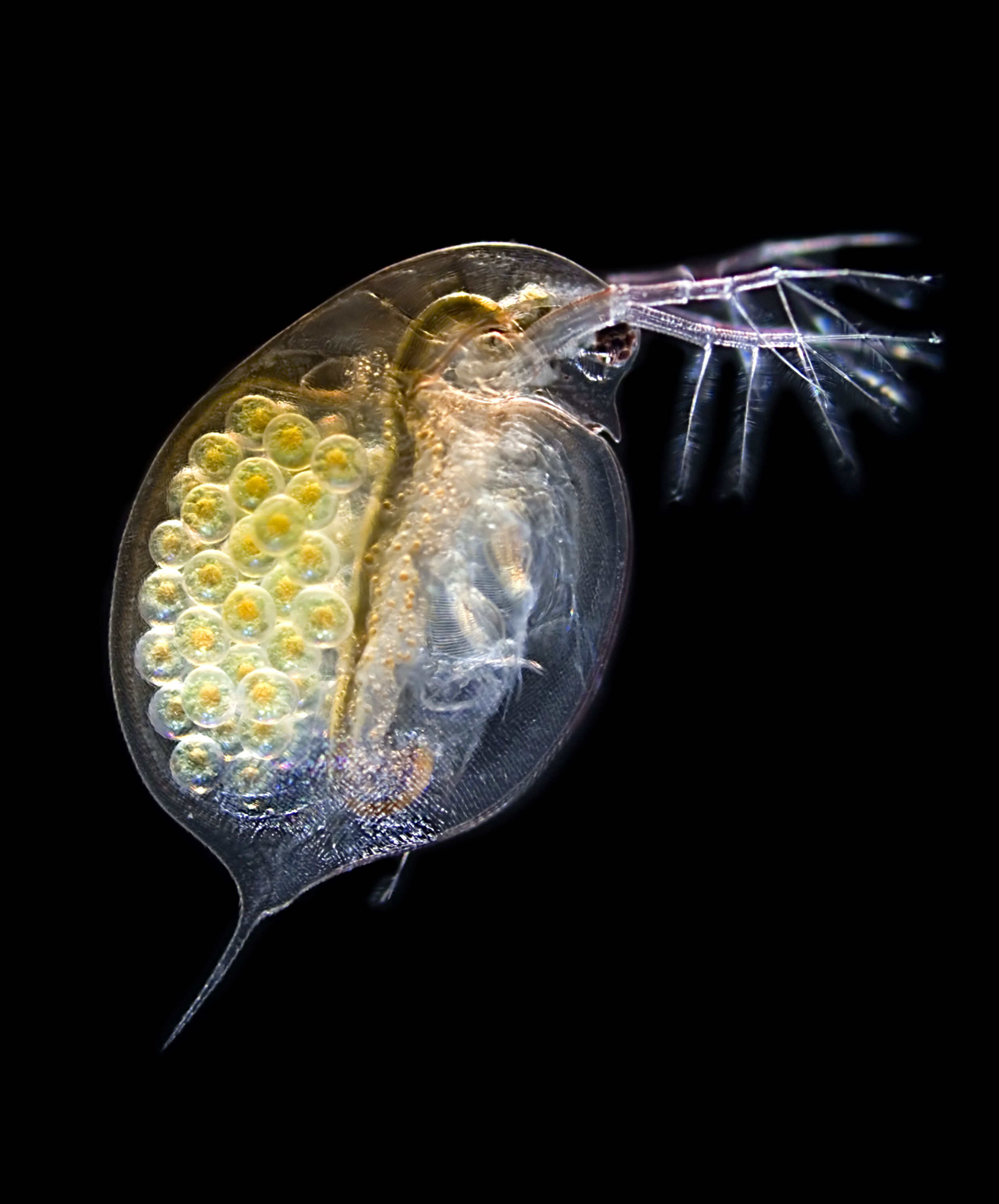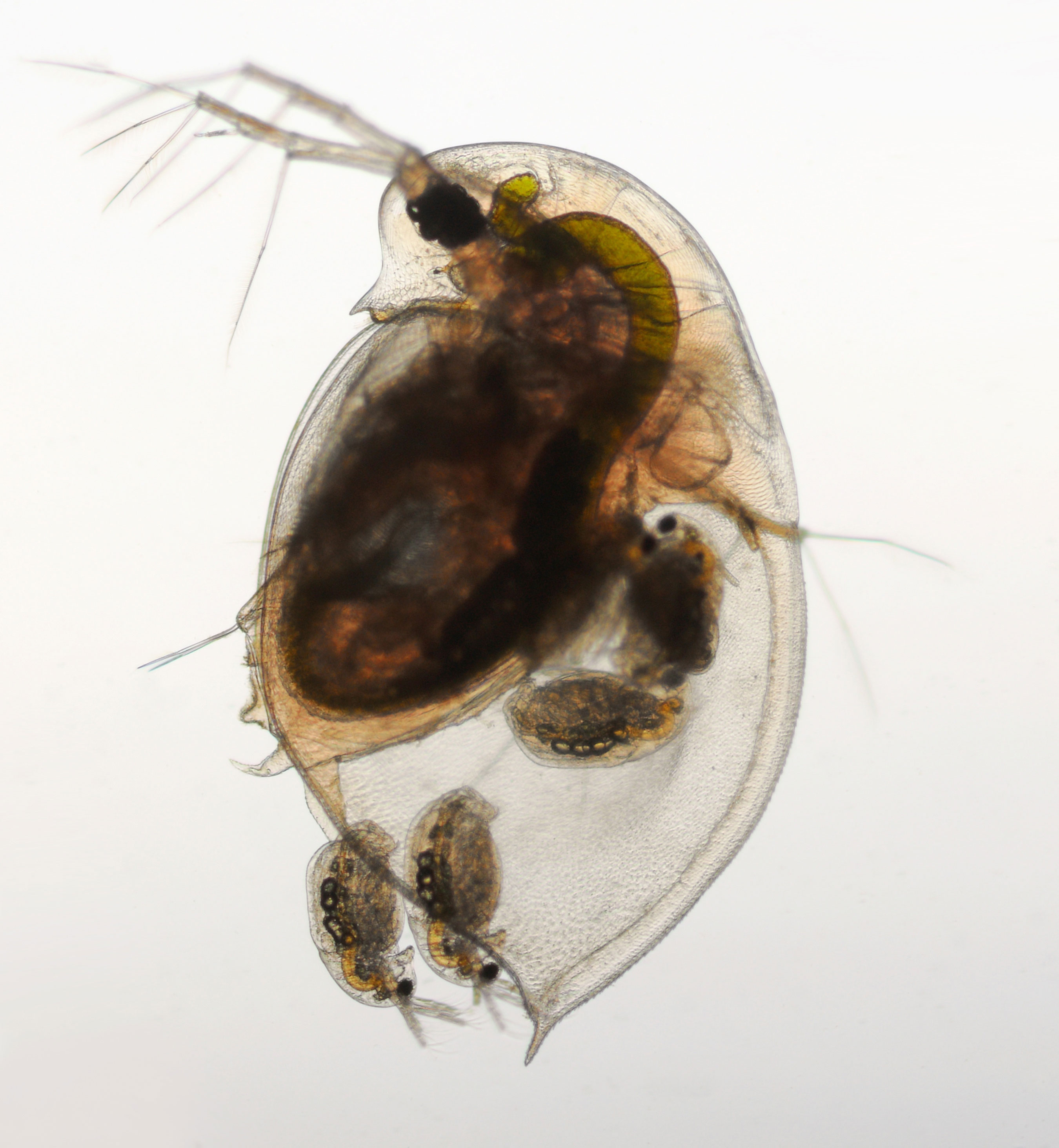Daphnia sp.
Systematics
Phylum Arthropoda (arthropods )
Subphylum Crustacea (crustaceans)
Class Anostraca (gill-feeders)
Order Branchiopoda (leaf-footed crustaceans)
Suborder Daphniidae (Daphnia)
Genus Daphnia
Species pulex


General breeding conditions
Glass jars, buckets and aquariums or large (butcher's/mason's) tubs (max. 60 litre capacity) with a correspondingly low water level.
Do not use aquatic plants - water flea breeding generally does not work in the presence of aquatic plants. This is also consistent with the observation that waters in which large numbers of water fleas occur usually contain no aquatic plants.
Avoid algae growth - algae that are stuck in the water also count as aquatic plants in the upper sense and hinder breeding.
2 - 3 tanks in parallel are advisable as "insurance", as with any live food breeding. However, the respective containers should not be treated completely identically.
Light
The light from nearby aquaria or indirect daylight is completely sufficient.
Daphnia sp. thrive in medium-bright locations, but may die within a few hours if exposed to direct sunlight or HQL/HQI radiation, especially in small containers.
Temperature
The optimum temperature for breeding is between 20 and 25 °C. Less favourable are 15 - 18 °C (slowed reproduction) and temperatures above 30 °C (tipping over of the water, controlled but feasible for approx. 14 days with little food).
Food
Yeast, food algae, dry food, Preis-Microplan, Artemia rearing food, nettle or filamentous algae powder, spirulina powder.
Preferably dry or baker's yeast slurried in a small amount of water, which is added drop by drop to the breeding tank until a slight cloudiness occurs. The turbidity should disappear again within a day.
Yeast slurries should be used within a few hours (preferably on the same day). If stored unrefrigerated, it will spoil within 1 - 3 days and if added to the water fleas, the entire culture will die within a few hours!
Do not close the slurry container tightly! Fermentation gases will form, which can cause the container to burst.
It is better to feed a little more carefully in the initial phase, especially when using yeast slurry. It is better to drizzle in a little twice a day (morning and evening) than once a day (until cloudy).
New batch
Add the breeding stock to a 5 - 10 litre container and gradually top up with aquarium water or stagnant tap water within 1 - 2 weeks, provided the water fleas have multiplied sufficiently. Adjust the respective water volume to the higher water flea density.
You can add the brown, fluffy filter sludge of a run-in filter that smells of forest soil (the filter sludge must never be slippery white or too thick). This soil mulm is important as a buffer and nutrient supplier as well as for the positive development of other bacterial cultures.
Miscellaneous
Snails are indispensable!
A dense stocking of mud snails or American post horn snails is essential for smooth breeding (tower cover snails can also be used, apple snails are too sensitive and die off). Snails actively participate in the soil mulm cycle by ingesting some of the mulm and, in particular, the moulting residues of the water fleas that would otherwise decompose. If dry food is added, this is used exclusively to feed the snails, not the Daphnia.
In the initial phase, indirect feeding of the water fleas is more helpful by feeding the snails rather than the Daphnia with dry food (this requires a little less sensitivity).
However, the dry food must be eaten by the snails by the second day at the latest, if it becomes mouldy, the antennae of the fleas will stick together.
Over time, the bottom of the container will be loosely covered with snail faeces. These are not vacuumed out, as they form the basis for the development of a variety of microorganisms that utilise the Daphnia as food.
If there are dead snails, they should be removed immediately.
If the water fleas die en masse, they must be removed immediately by suction to prevent the biology of the breeding tank from being completely overturned.
Otherwise, the evaporation loss must be regularly replaced with aquarium water.
Water changes or other changes are necessary if:
- the water snails no longer produce spawn balls.
- many or very many water fleas develop permanent eggs (= deteriorated environmental conditions).
- the substrate becomes detached from the bottom due to gas formation and floats to the top (especially in summer).
- Sticking algae form. Water flea breeding only tolerates very sparse algae growth (better to avoid algae growth altogether).
Our spirulina powder is ideal for feeding a well-running water flea farm.

